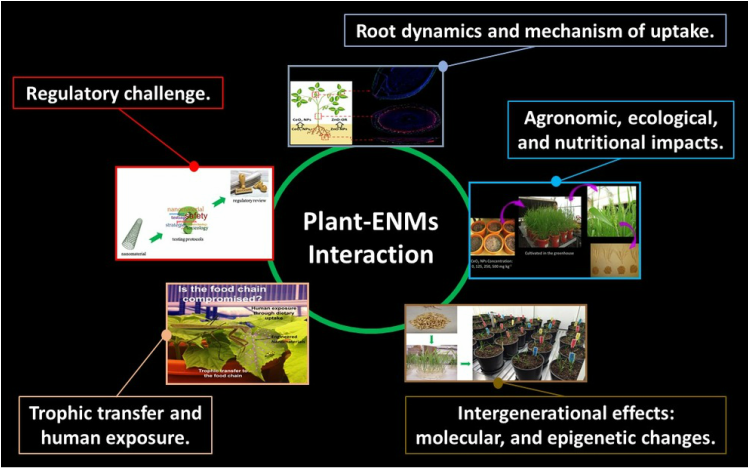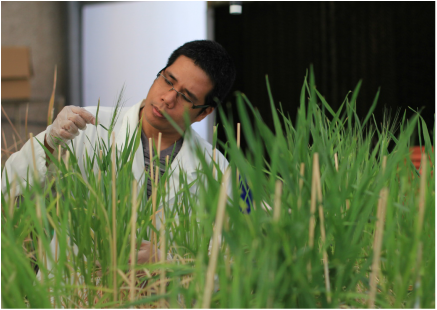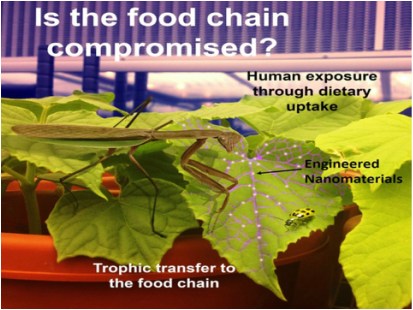Research Interest
MSU Foundation Award for Excellence in Research
I. Focus of Research
The goal of my research is to use analytical chemistry to provide a mechanistic understanding of plant-stressor interactions, and to evaluate the implications of this information in the context of environmental integrity, human health and society. I have strong background and broad experience in environmental science, analytical chemistry, and plant/agricultural science. It is in the overlapping realm of these disciplines that I do research to help train future scientists and address questions relevant to science and society. Our research group works on understanding the benefits and risks of engineered nanomaterials (ENMs) as well as the hazards of emerging contaminants. Emerging contaminants is a class of pollutants whose human and environmental impacts are not well understood. These contaminants include ENMs, organofluorinated compounds, micro or nanoplastics, brominated flame retardants, disinfectant byproducts, and other seemingly benign chemicals such as sucralose, artificial sweeteners, antibiotics, and sunscreens. We routinely assay stress responses and elemental profile in plants, and metabolomic changes and generational impacts of emerging contaminants to investigate epigenetic changes in plants. Understanding the environmental behavior of contaminants could lead to their effective remediation in the environment. Similarly, understanding plant-nanomaterial interaction could lead to improved applications of engineered nanoparticles in various fields.
The goal of my research is to use analytical chemistry to provide a mechanistic understanding of plant-stressor interactions, and to evaluate the implications of this information in the context of environmental integrity, human health and society. I have strong background and broad experience in environmental science, analytical chemistry, and plant/agricultural science. It is in the overlapping realm of these disciplines that I do research to help train future scientists and address questions relevant to science and society. Our research group works on understanding the benefits and risks of engineered nanomaterials (ENMs) as well as the hazards of emerging contaminants. Emerging contaminants is a class of pollutants whose human and environmental impacts are not well understood. These contaminants include ENMs, organofluorinated compounds, micro or nanoplastics, brominated flame retardants, disinfectant byproducts, and other seemingly benign chemicals such as sucralose, artificial sweeteners, antibiotics, and sunscreens. We routinely assay stress responses and elemental profile in plants, and metabolomic changes and generational impacts of emerging contaminants to investigate epigenetic changes in plants. Understanding the environmental behavior of contaminants could lead to their effective remediation in the environment. Similarly, understanding plant-nanomaterial interaction could lead to improved applications of engineered nanoparticles in various fields.
II. Major Projects
- 2018 – present: Generational exposure of plants to contaminants
- 2024 – present: Liquid chromatography – Mass Spectrometry (LC-MS) metabolites analysis in plants
- 2018 – present: Metabolomics of plants exposed to emerging contaminants
- 2014 – 2018: Synchrotron analysis of speciation of engineered nanomaterials
- 2010 – present: Inductively Coupled Plasma – Mass Spectrometry (ICP-MS) elemental analysis in environmental samples
- 2010 – present: Physiology, productivity, and nutritional value of globally important agricultural crops (rice, wheat, barley, corn, cucumber, cilantro, tomato, green peas, soybean, alfalfa) exposed to contaminants (engineered nanomaterials, perfluoroalkyl substances)
III. Future Directions of Research
I will continue to work on the interactions of plants to emerging contaminants. In particular, I will explore transcriptomics and DNA methylations in plants generationally-exposed to contaminants. I will explore the mechanism of how engineered nanoparticles can be used to improve agricultural productivity. I want to investigate contaminants in karst, caves, and springs especially since this is a huge resource in Springfield, Missouri. I also plant to have stronger collaborations with researchers here at MSU or outside research institutions.
I will continue to work on the interactions of plants to emerging contaminants. In particular, I will explore transcriptomics and DNA methylations in plants generationally-exposed to contaminants. I will explore the mechanism of how engineered nanoparticles can be used to improve agricultural productivity. I want to investigate contaminants in karst, caves, and springs especially since this is a huge resource in Springfield, Missouri. I also plant to have stronger collaborations with researchers here at MSU or outside research institutions.
Research Theme
The goal of my research is to use analytical chemistry to provide a mechanistic understanding of plant-stressor interactions, and to evaluate the implications of this information in the context of environmental integrity, human health and society. I have strong background and broad experience in environmental science, analytical chemistry, and plant/agricultural science. It is in the overlapping realm of these disciplines that I do research to help train future scientists and address questions relevant to science and society.
Research Accomplishments
During my PhD, I worked on understanding the interactions of engineered nanomaterials (ENMs) in terrestrial environments including soils, microbes, and plants, with an aim to predict and manage impacts. ENMs are expected to enter soils via wastewater treatment biosolids, atmospheric deposition, and solid waste disposal. In soils and with plants, ENMs can impact nutrient cycling including pollutant remediation, agricultural production, food quality and safety, and water quality. ENMs may also transform, thereby affecting their transport and toxicity. My research revealed a clear picture of ENMs benefits and hazards to human health, agricultural production, and food safety, but knowledge on how their unintended hazards should be managed is still largely unknown. I conducted full life cycle assessments in plants which, to my knowledge, are pioneering studies in a handful of such studies published today.
My postdoctoral research is a continuation of my doctoral work and focuses on the intergenerational effects of nanomaterials in plants. Initial data are showing physiological, molecular and epigenetic responses in succeeding generations. For example, second generation plants exhibit changes in vegetative growth and phenological development, variations in natural abundance stable isotopes, and cold hardiness. These results are indicating that ENM exposure alters traits that may be carried from one generation to another epigenetically. To my knowledge, there are only two publications on second generation studies and none on epigenetics and isotopic studies. In summary, my research encompasses broad range of work with scientific and societal impacts. I investigated ENMs mechanisms of physiological, toxicological, molecular and biochemical responses in plants, induced epigenetics and intergenerational changes in plants, effects on soil fertility, nutrient cycling and crop productivity, uptake and accumulation in plants and potential transfer to the food chain, and impacts on food safety and human health and nutrition. Many of these findings are novel and open new research questions and opportunities, which I am keen on using to solicit funding for future researches. I hope to make scientific contributions that will fill in the huge knowledge gap in the field and potentially used for regulatory purposes leading sustainable use and regulation of nanomaterials.
My postdoctoral research is a continuation of my doctoral work and focuses on the intergenerational effects of nanomaterials in plants. Initial data are showing physiological, molecular and epigenetic responses in succeeding generations. For example, second generation plants exhibit changes in vegetative growth and phenological development, variations in natural abundance stable isotopes, and cold hardiness. These results are indicating that ENM exposure alters traits that may be carried from one generation to another epigenetically. To my knowledge, there are only two publications on second generation studies and none on epigenetics and isotopic studies. In summary, my research encompasses broad range of work with scientific and societal impacts. I investigated ENMs mechanisms of physiological, toxicological, molecular and biochemical responses in plants, induced epigenetics and intergenerational changes in plants, effects on soil fertility, nutrient cycling and crop productivity, uptake and accumulation in plants and potential transfer to the food chain, and impacts on food safety and human health and nutrition. Many of these findings are novel and open new research questions and opportunities, which I am keen on using to solicit funding for future researches. I hope to make scientific contributions that will fill in the huge knowledge gap in the field and potentially used for regulatory purposes leading sustainable use and regulation of nanomaterials.
Research Experience
2015-2017 Research Fellow. National Research Council, US Environmental Protection Agency, Corvallis, Oregon, USA
2010-2014 Graduate Research Assistant. University of California Center for Environmental Implications of Nanotechnology, The University of Texas at El Paso, El Paso, Texas, USA
2007-2010 Researcher. R&D Center, ISTECH, Inc. CU Techno Center, Catholic University of Daegu, South Korea
2005-2007 Graduate Research Assistant. College of Agriculture and Life Sciences, Kyungpook National University, Daegu, South Korea
- Performed intergenerational studies on physiological, molecular and epigenetic responses of plants exposed to nanomaterials.
- Investigated effects of nanomaterials on natural abundance variations in stable isotopes in plants.
- Investigated the mechanism of nanomaterials fate, transformation and transport in soil and plants.
- Investigated the interaction between cerium oxide nanoparticles and soil nutrient (nitrogen, phosphorus, iron, manganese, calcium) and its effects on uptake in plants.
- Investigated the effects of mycorrhizae on nanomaterial transformation and uptake in plants.
- Submitted proposals and secured beamtime for synchrotron microscopy work at the Advanced Light Source, Lawrence Berkeley National Laboratory.
- Prepared Quality Assurance Project Plan and SOPs pertaining to research projects being conducted.
- Familiarized with important environmental laws particularly the Toxic Substances Control Act (TSCA), Federal Insecticide, Fungicide, and Rodenticide Act (FIFRA), Clean Water Act, and Safe Drinking Water Act
- Prepared journal article for publication, gave oral and poster presentations in scientific conferences, contributed blog to online scientific magazine.
- Mentored and trained undergraduate STEM students in research.
2010-2014 Graduate Research Assistant. University of California Center for Environmental Implications of Nanotechnology, The University of Texas at El Paso, El Paso, Texas, USA
- Maintained and performed analysis using ICP - OES/MS, Flame and Graphite Furnace AAS, XRF, and FT-IR Spectroscopy/Microscopy.
- Employed synchrotron microscopy analysis to assess nanomaterials (CeO2, ZnO) characterization, fate, transformation and transport in soil and plants.
- Performed multi-variate analysis in combination with FT-IR Spectroscopy/Microscopy to assess molecular changes in plants.
- Investigated the impacts of engineered nanomaterials (CeO2, ZnO) on the physiology, productivity, and nutritional value of globally important agricultural crops (rice, wheat, barley, corn, cucumber, cilantro, tomato, green peas, soybean, alfalfa).
- Investigated transfer of engineered nanomaterials in the food web, particularly leading to human exposure.
- Prepared journal article for publication, gave oral and poster presentations in scientific conferences, contributed blog to online scientific magazine.
- Prepared proposals and obtained funding for research and travel awards.
- Prepared SOPs for instruments and analytical/biochemical analyses used in the conduct of experiments.
- Person-In-Charged of Graphite Furnace AAS and FT-IR Spectroscopy and Microscopy of Dr. Jorge Gardea’s research laboratory for 2 semesters.
- Mentored and trained high school, undergraduate and graduate students in research.
2007-2010 Researcher. R&D Center, ISTECH, Inc. CU Techno Center, Catholic University of Daegu, South Korea
- Conducted field and laboratory research on a government-funded project on product development of soil ameliorants, and self-incompatibility control substance in apples, pear, peach, sweet cherry.
- Established and coordinated research and product testing in 20 institutions in 24 countries including Taiwan, Japan, Australia, India, Poland, Hungary, Israel, Malaysia, Vietnam, and Mexico.
- Gave seminars on self-incompatibility in plants in International Biotechnology Roadshows in Thailand, Vietnam, and India.
- Prepared manuscript for journal publication and presented papers in scientific meetings.
2005-2007 Graduate Research Assistant. College of Agriculture and Life Sciences, Kyungpook National University, Daegu, South Korea
- Conducted greenhouse and field experiments on agro-environmental studies of spent mushroom compost, biochar, mixture of charcoal and pyroligneous acid, rice bran charcoal, biofertilizer prepared from municipal solid waste, and rice/wood vinegar for soil amelioration, crop productivity of cereals (rice, corn) and vegetable (soybean, sesame, tomato, eggplant, chili), and weed (barnyard grass) control.
- Investigated the effects of pyroligneous acid on weed control efficacy of sulfonylurea herbicides in greenhouse and field setting.
- Conducted enzyme assay, soil analysis, proximate analysis, metal analysis, amino acid analysis, nutritional quality and antioxidant properties analysis of food crop.
- Prepared journal article for publication, gave oral and poster presentations in scientific conferences.
- Gave a 3-hour lecture on methods of chemical analysis of soil and plants to 2nd year undergraduate students majoring in agricultural studies.
- Assisted in the conduct of undergraduate laboratory classes.
- Managed the crop physiology laboratory activities/experiments for 1 year.
- Mentored and trained graduate students from South Korea, Ghana, Nepal, Philippines, Bangladesh and Republic of Lao.
UC CEIN Researcher Spotlight
Research Projects
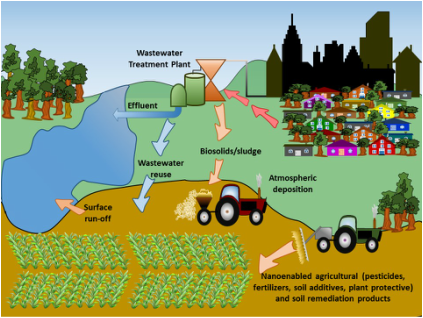 Photo credits: Rico, Cyren M. ProQuest Dissertations and Theses
Photo credits: Rico, Cyren M. ProQuest Dissertations and Theses
Nanoagriculture
The application of ENMs in agricultural practices offers beneficial improvements exceeding those of farm mechanization and green revolution. However, it is a major route in which the environment, food chain and humans may be exposed to ENMs. Nanoformulations are claimed to boost the efficacy of agro-chemicals, improve upon delivery systems, promote plant nutrient uptake and yield, and enhance food quality at minimal impact to the environment. In fact, nano-agricultural inputs (i.e. nanopesticides and nanofertilizers) have been commercially available for several years, and new products are expected to inundate the market if thousands of patent applications currently in the pipeline are approved. As such, it is highly possible that edible plants could be exposed to high levels of ENMs from direct application of nano-enabled agricultural inputs. Alternatively, huge amounts of nanomaterial are expected to reach agricultural fields through applications of biosolids/sludge from wastewater treatment plants. The present state of knowledge in ENMs applications in agriculture is still in a foundational stage. Not only are data limited and inconclusive regarding ENMs impacts in agricultural productivity, nutritional quality and food safety, but more information is needed on properties that control ENMs effects in plants. It is evident that particle size, coating, and surface charge, and application dose and method have influence on ENMs impacts and bioavailability to plants. The interplay of these factors makes it extremely challenging to track and predict nanomaterials impacts in plants. Unlike herbicides and pesticides wherein mechanisms of action can be established based on the functionality of the active ingredients, chemical characteristics that can predict environmental behavior and impacts of nanomaterials are unknown. Hence, plant responses to nanomaterials treatments have been reported but the mechanisms of action are not well-understood. My goal is to understand production, nutrition and safety issues associated with ENMs applications in food crops production. Understanding these complex issues is a critical aspect in gaining public acceptance of nanotechnology and in developing the emerging field of plant nanotechnology. ENMs potential impacts, if not properly understood and managed, could potentially derail the development of a multi-billion dollar nano-agriculture industry.
The application of ENMs in agricultural practices offers beneficial improvements exceeding those of farm mechanization and green revolution. However, it is a major route in which the environment, food chain and humans may be exposed to ENMs. Nanoformulations are claimed to boost the efficacy of agro-chemicals, improve upon delivery systems, promote plant nutrient uptake and yield, and enhance food quality at minimal impact to the environment. In fact, nano-agricultural inputs (i.e. nanopesticides and nanofertilizers) have been commercially available for several years, and new products are expected to inundate the market if thousands of patent applications currently in the pipeline are approved. As such, it is highly possible that edible plants could be exposed to high levels of ENMs from direct application of nano-enabled agricultural inputs. Alternatively, huge amounts of nanomaterial are expected to reach agricultural fields through applications of biosolids/sludge from wastewater treatment plants. The present state of knowledge in ENMs applications in agriculture is still in a foundational stage. Not only are data limited and inconclusive regarding ENMs impacts in agricultural productivity, nutritional quality and food safety, but more information is needed on properties that control ENMs effects in plants. It is evident that particle size, coating, and surface charge, and application dose and method have influence on ENMs impacts and bioavailability to plants. The interplay of these factors makes it extremely challenging to track and predict nanomaterials impacts in plants. Unlike herbicides and pesticides wherein mechanisms of action can be established based on the functionality of the active ingredients, chemical characteristics that can predict environmental behavior and impacts of nanomaterials are unknown. Hence, plant responses to nanomaterials treatments have been reported but the mechanisms of action are not well-understood. My goal is to understand production, nutrition and safety issues associated with ENMs applications in food crops production. Understanding these complex issues is a critical aspect in gaining public acceptance of nanotechnology and in developing the emerging field of plant nanotechnology. ENMs potential impacts, if not properly understood and managed, could potentially derail the development of a multi-billion dollar nano-agriculture industry.
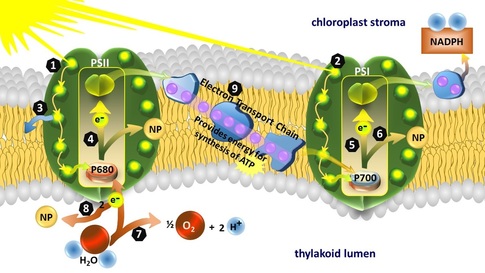 Photo credits: Rico et al. in Siddiqui et al. (eds.) Springer 2015, DOI;10.1007/978/-3-319-14502-0_1
Photo credits: Rico et al. in Siddiqui et al. (eds.) Springer 2015, DOI;10.1007/978/-3-319-14502-0_1
Determining sensitive endpoints and developing analytical techniques for plant-ENMs exposure studies.
The last 10 years of active nanophytotoxicity studies have revealed much understanding on ENMs impacts in terrestrial organisms. However, literature review would show that endpoints used (germination, biomass, pigment production) are rather insensitive for elucidating mechanisms of action of toxicity. The research community should now work on determining subtle systems-level processes that can be used as more relevant tools for predicting environmental toxicity of ENMs.
The last 10 years of active nanophytotoxicity studies have revealed much understanding on ENMs impacts in terrestrial organisms. However, literature review would show that endpoints used (germination, biomass, pigment production) are rather insensitive for elucidating mechanisms of action of toxicity. The research community should now work on determining subtle systems-level processes that can be used as more relevant tools for predicting environmental toxicity of ENMs.
Select Media Coverage
- CBS News “Safe enough to eat?”
- ACS PressPac “Safety of nanoparticles in food crops is still unclear”
- ScienceDaily “Safety of nanoparticles in food crops is still unclear”
- CNET Magazine “Scientists declare knowledge gap in nanoagriculture”
- New Haven Independent “Nano & the food chain: Another puzzle”
- ACS Podcast “Questions about the safety of nanoparticles in food crops”
- Nanowerk “Safety of nanoparticles in food crops is still unclear”
- ACS PressPac “Widely used nanoparticles ester soybean plants from farm soil”
- ESRL Highlights “X-Ray reveal uptake of nanoparticles by soya bean crops”
- Lightsources.org “X-rays reveal uptake of nanoparticles by soya bean crops”
- AZoNano “Soybean plants may be adversely affected by nanoparticles”
- UC CEIN Researcher Spotlight “Nanoparticle interactions with plants”
- DugDug Research Made Simple “Effect of cerium oxide nanoparticle on rice”
- SNO Report "Where are they now? Student award winners Q&A"
- US EPA This Week @ WED "Spotlight on Research"
Journal Referee
|
|
External Reviewer
- ACS Petroleum Fund
- Swiss National Science Foundation
- UKRI Biotechnology and Biological Sciences Research Council
- Elsevier Book Proposal
- NSF Major Research Instrumentation Program
- MSc Thesis, University of Southern Australia

